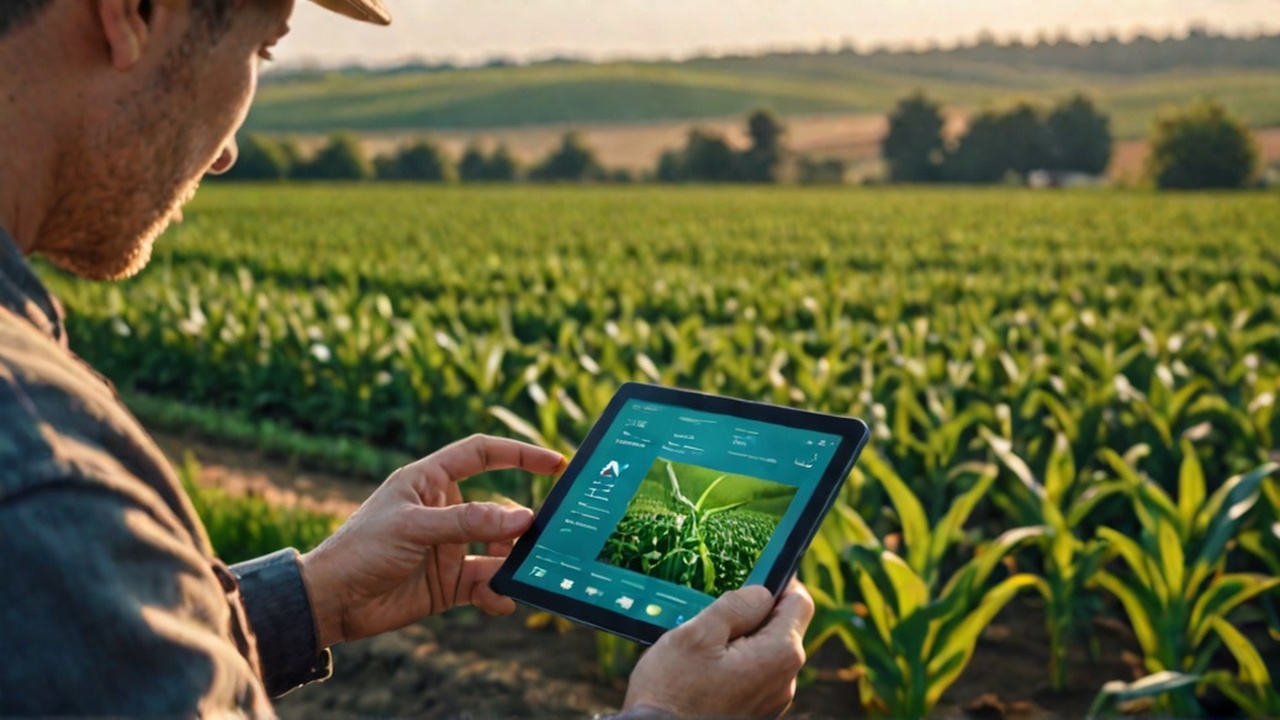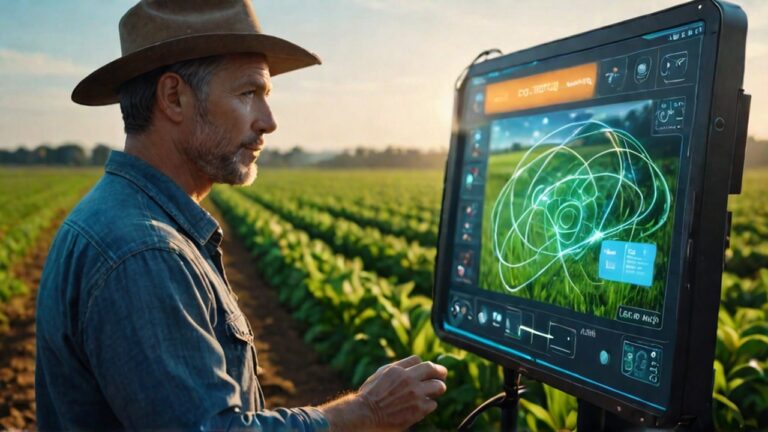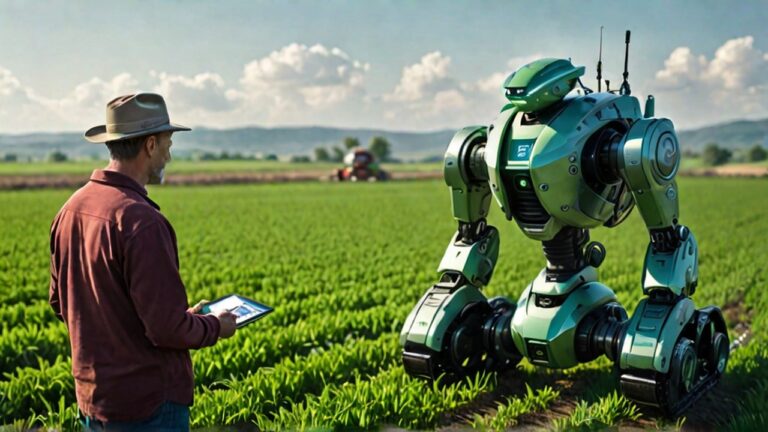AI in Agriculture Basics: Everything You Need to Know in 2024
AI in agriculture involves using artificial intelligence technologies to improve farming efficiency and productivity. These technologies include machine learning, robotics, and data analytics.
Agriculture is undergoing a transformation with the integration of AI technologies. Farmers now use AI to monitor crop health, optimize irrigation, and predict yields. Drones equipped with AI analyze soil and provide real-time data. Machine learning algorithms help in pest detection and disease management.
Robotics automate repetitive tasks, reducing labor costs and increasing efficiency. AI-driven analytics offer valuable insights, helping farmers make informed decisions. These advancements lead to sustainable farming practices, higher yields, and reduced environmental impact. AI in agriculture is not just a trend but a crucial evolution for feeding the growing global population.
Introduction To Ai In Agriculture
Agriculture is rapidly evolving with technology. Artificial Intelligence (AI) is at the forefront. AI helps farmers make smarter decisions. This technology boosts productivity and sustainability. AI in agriculture ensures better crop management and resource use.
The Need For Innovation
Farming faces many challenges. Climate change, soil degradation, and pest infestations are major issues. Farmers need innovative solutions. AI offers precise and timely interventions. This technology helps manage resources and improve yields.
| Challenges | AI Solutions |
|---|---|
| Climate Change | Weather prediction models |
| Soil Degradation | Soil health monitoring |
| Pest Infestations | Pest detection systems |
Historical Context
Agriculture has always embraced new technologies. From the plow to the tractor, innovation drives progress. AI is the latest chapter in this history. Early AI applications in agriculture focused on data collection. Today, AI integrates with sensors, drones, and robots.
In the 1980s, scientists began exploring AI for crop management. They created early models for predicting crop yields. By the 2000s, AI tools became more sophisticated. Now, AI systems can analyze vast amounts of data. This helps farmers make informed decisions quickly.
- 1980s: Early AI models for crop management
- 2000s: Advanced AI tools for data analysis
- Today: AI integrates with modern farming equipment
Precision Farming
Precision farming uses AI to improve agricultural practices. It helps farmers make better decisions by using data and technology. This method increases efficiency and crop yield. Below, we explore key aspects of precision farming.
Data-driven Decisions
AI collects data from various sources. These sources include soil sensors, weather stations, and drones. This data helps farmers understand their fields better. They can see soil moisture levels, nutrient content, and crop health.
With this information, farmers make informed decisions. They know when to water, fertilize, or apply pesticides. This reduces waste and saves money.
Here is a table showing data sources and their benefits:
| Data Source | Benefits |
|---|---|
| Soil Sensors | Monitor moisture and nutrients |
| Weather Stations | Predict weather patterns |
| Drones | Check crop health |
Yield Optimization
AI helps farmers optimize crop yields. It analyzes data to find the best farming practices. This includes planting times, irrigation schedules, and crop rotation.
By following AI recommendations, farmers can increase their harvest. They can also reduce the use of water, fertilizers, and pesticides. This makes farming more sustainable.
Here are some ways AI optimizes yield:
- Suggests the best time to plant
- Recommends proper irrigation techniques
- Advises on crop rotation
Crop Monitoring
Artificial Intelligence (AI) is transforming agriculture. One of its key applications is crop monitoring. This involves using advanced technologies to observe and analyze crop growth and health. Let’s explore how AI enhances crop monitoring through Remote Sensing Technologies and Disease Detection.
Remote Sensing Technologies
Remote sensing technologies gather data from a distance. Drones and satellites are commonly used for this purpose. They capture high-resolution images of fields. These images provide valuable insights into crop conditions.
AI analyzes these images to identify areas needing attention. It can detect variations in soil moisture, nutrient levels, and plant health. This allows farmers to take timely actions. Below is a table summarizing key benefits:
| Benefit | Description |
|---|---|
| Early Issue Detection | Identify problems before they escalate |
| Resource Optimization | Efficient use of water, fertilizers, and pesticides |
| Improved Yields | Healthier crops lead to better yields |
Disease Detection
AI excels in disease detection. It can recognize disease symptoms early. This helps in preventing large-scale crop damage. Using machine learning algorithms, AI systems analyze patterns in plant health.
Farmers receive real-time alerts about potential diseases. This allows for immediate intervention. The steps involved in disease detection through AI are:
- Data Collection: Gather images and sensor data from the field.
- Data Analysis: Use AI to identify disease indicators.
- Alert Generation: Notify farmers about detected issues.
- Action Recommendation: Provide solutions for disease management.
AI-powered disease detection ensures crops remain healthy. This reduces losses and boosts productivity. Farmers can achieve more with less effort.
Soil Management
Soil management is crucial for healthy crops. AI helps farmers understand soil better. It ensures crops get the right nutrients and prevents soil erosion.
Nutrient Analysis
AI tools analyze soil nutrients. They identify nutrient deficiencies quickly. This helps farmers apply the right fertilizers.
Here is a simple table showing common soil nutrients and their roles:
| Nutrient | Role |
|---|---|
| Nitrogen | Promotes leaf growth |
| Phosphorus | Supports root development |
| Potassium | Boosts disease resistance |
Erosion Control
AI helps in predicting soil erosion. It uses weather data and soil conditions. Farmers can take action to protect their land.
Here are some AI-supported erosion control methods:
- Planting cover crops
- Building terraces
- Using mulches
Smart Irrigation Systems
Smart irrigation systems are transforming agriculture. These systems use AI to optimize water use. They ensure crops get the right amount of water. This technology helps farmers save water and increase yields.
Water Conservation
Water is a precious resource. Smart irrigation systems help in water conservation. They use sensors to monitor soil moisture levels. When soil is dry, the system waters the plants. This prevents over-watering and under-watering.
Here are some key benefits of water conservation through smart irrigation:
- Reduced water waste
- Lower water bills
- Improved plant health
Using less water is good for the environment. It also helps in regions with water shortages.
Automation Benefits
Automation makes irrigation easy. Smart systems can be controlled remotely. Farmers can use a smartphone or computer.
Here are some benefits of automation:
| Benefit | Description |
|---|---|
| Time-saving | Farmers can focus on other tasks. |
| Consistency | Crops receive water at the right times. |
| Data-driven | Systems use data to optimize watering. |
Automation reduces human error. This leads to better crop yields and resource management.
Livestock Management
Livestock management has seen significant advancements with the introduction of AI. AI offers tools and technologies to improve the care and productivity of livestock. Below, we explore two crucial areas: Health Monitoring and Breeding Programs.
Health Monitoring
AI helps in monitoring the health of livestock effectively. Sensors collect data on animal activities and behaviors. This data includes eating habits, movement, and sleep patterns.
Farmers receive alerts for any abnormal behavior. Early detection of diseases becomes possible. This ensures timely medical intervention and reduces mortality rates.
AI systems also track environmental conditions. Factors like temperature and humidity are monitored. These conditions affect livestock health. Maintaining optimal conditions ensures better health and productivity.
Breeding Programs
AI enhances breeding programs for livestock. Advanced algorithms analyze genetic data. This helps in selecting the best traits for breeding.
Farmers can predict the health and productivity of offspring. This leads to healthier and more productive livestock. AI also helps in tracking the breeding cycles. This ensures timely and efficient breeding processes.
Moreover, AI can identify genetic disorders early. This information is crucial for making informed breeding decisions. Overall, AI makes breeding programs more efficient and effective.
Supply Chain Optimization
AI in agriculture transforms supply chains. It makes them efficient and predictable. Farmers and distributors benefit from AI’s capabilities. Let’s explore how AI achieves this in logistics and market predictions.
Logistics Efficiency
AI enhances logistics efficiency. It uses data to optimize routes. This reduces fuel costs and delivery times. Farmers can track shipments in real time. They know where their products are. This prevents delays and spoilage.
| AI Feature | Benefit |
|---|---|
| Route Optimization | Reduces fuel costs |
| Real-time Tracking | Prevents delays |
| Predictive Maintenance | Minimizes downtime |
Market Predictions
AI helps predict market demands. Farmers adjust their production accordingly. This reduces waste and increases profits. AI analyzes weather, market trends, and consumer behavior. Accurate predictions help farmers make informed decisions.
- Weather patterns
- Market trends
- Consumer behavior
AI provides valuable insights. Farmers know what to plant and when. They can also adjust prices based on demand. This keeps the supply chain smooth and profitable.
Future Of Ai In Farming
The future of AI in farming is bright and promising. AI technologies are transforming agriculture. Farmers can now use smart tools to improve crop yields. These advancements make farming more efficient and sustainable.
Emerging Technologies
Many new technologies are emerging in the field of agriculture. These technologies include drones, sensors, and robots.
- Drones: Drones help monitor crops and gather data.
- Sensors: Sensors measure soil moisture and health.
- Robots: Robots can plant seeds and harvest crops.
These tools help farmers make better decisions. They reduce waste and increase productivity.
Sustainability Goals
AI in farming also supports sustainability goals. Sustainable farming practices protect the environment.
AI helps reduce the use of harmful chemicals. It ensures crops get just the right amount of water and nutrients.
| Goal | AI Contribution |
|---|---|
| Reduce Water Use | Smart irrigation systems |
| Reduce Chemical Use | Precision farming techniques |
| Improve Soil Health | Soil monitoring sensors |
These practices make farming more eco-friendly. They help ensure a sustainable future for everyone.
Frequently Asked Questions
What Is Ai In Agriculture?
AI in agriculture involves using technology like machine learning and data analytics. It helps farmers optimize crop yields, manage resources, and predict trends.
How Does Ai Improve Crop Yield?
AI analyzes data from soil sensors, weather forecasts, and crop health. This information helps farmers make informed decisions, increasing crop yields.
What Are Examples Of Ai In Agriculture?
Examples include precision farming, automated irrigation systems, and drone-based crop monitoring. These technologies improve efficiency and productivity.
Can Ai Help With Pest Control?
Yes, AI can identify pests early through image recognition. This allows for targeted treatments, reducing pesticide use.
Conclusion
Artificial intelligence is transforming agriculture. It boosts efficiency, reduces costs, and improves crop yields. Embracing AI in farming practices can lead to sustainable and profitable operations. As technology advances, farmers should stay informed and adopt these innovative solutions. The future of agriculture depends on integrating AI for smarter farming.



